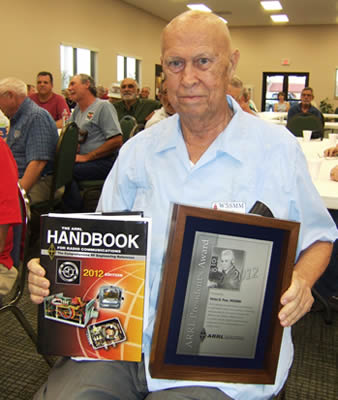Victor Poor, an early computing pioneer, passed away at age 79 in Palm Bay, Florida on Friday, following a brief battle with pancreatic cancer. He worked alongside a handful of engineers to develop Intel's first single chip microprocessor, the 4004, in addition to influencing the industry with his passion for wireless radio.
Born on July 12, 1933 in Los Angeles to Pinckney Peyton and Leona Lucille Poor, Victor developed a passion for radio during his early years and pursued further electronics education in the Navy. In November 1952, he completed that training and married his wife, Florence before being posted to Ford Island naval base in Pearl Harbor, Hawaii.
Poor left the Navy three years later and joined Stromberg-Carlson in San Diego where he trained in computer programming, releasing his first program a year later. He then moved to Maryland and worked for Frederick Electronics, adapting radioteletype machines to send data wirelessly, which resulted in sales to the US Army and other commercial customers.
In 1969, he came up with the underlying architecture for the modern microprocessor on his living room floor during a Thanksgiving holiday with fellow amateur radio enthusiast Harry Pyle. Later the same year he joined Computer Terminal Corporation as a technical director and approached Intel to see if his design could fit onto a computer chip. The partnership resulted in the Intel 4004, a revolutionary chip that combined all the elements of a programmable computer onto a single chip, destined for a calculator for a Japanese firm.
He joined Intel later the same year to develop the design further, resulting in the world's first 8-bit microprocessor, the Intel 8008, as well as the 8086 and 8088. The latter was fitted to IBM's first personal computer in 1981, propelling Intel to Fortune 500 status.
In 1994, Poor retired and pursued his passion for sailing. Frustrated with challenges mariners faced at sea, he developed software that integrated the Internet with amateur radio to store and retrieve messages. A testament to Poor's fine work, it's still used widely by amateurs, the US military, state and local emergency preparedness teams and is credited as one of the few communications systems that remained operational in the aftermath of Hurricane Katrina.
